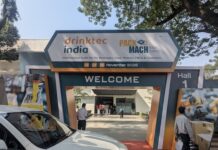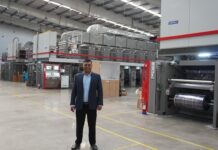A large majority of Flipkart’s marketplace sellers are working on sustainable packaging with the adoption rates of these practices reaching as high as 75% says Mahesh Singh the head of sustainability at the company. Flipkart first targeted 70 hubs in the state of Maharashtra with this effort and today it covers more than 700 of its hubs across the country.
“The majority of sellers on our marketplace have eliminated single-use plastic. However, this has taken a lot of effort. It was a complex problem to solve as we have a large number of sellers on the platform. But we have managed to do it,” says Mahesh Pratap Singh, head of sustainability and social responsibility, Flipkart.
Meanwhile, Singh asserts that Flipkart itself has achieved the milestone of 100% elimination of single-use plastic in its own supply chain covering more than 70 facilities across India. Flipkart is currently trying to galvanize the use of sustainable packaging across all its different sectors of the value chain.

Flipkart has a dedicated supply chain and last-mile infrastructure with several hundreds of large and medium-sized fulfillment centers and mother hubs across the country which helps the company in delivering millions of shipments every day across the country.
Design and development for zero landfill
To achieve zero packaging waste, Flipkart has adopted methods to enhance the use of recyclable packaging materials across its value chain. Initial pilots in 2019 to reduce and reuse packaging and recycling generated plastic waste developed into an organization-wide program to find alternatives to plastic materials used.
Its teams went through a design and development process scouting for options to advance efforts to ensure zero waste landfills. It was important to ensure that the alternatives being adopted could handle the pressures of the eCommerce supply chain, be sturdy enough to adapt to characteristics of different product categories, and most importantly, be affordable and scalable for seller partners.
Flipkart developed guidelines for the sellers to adopt sustainable packaging but also fostered creativity and innovation by the sellers who were then able to co-create a variety of viable packaging options. The packaging designed by in-house teams was also made available to seller partners for use.
Flipkart-WWF Un-Plastic collaboration
Recently WWF India published a case study on the Flipkart Group and the Group’s focus on sustainable packaging in eCommerce. Flipkart collaborated with WWF India under the Un-Plastic Collective (UPC) – a voluntary, multi-stakeholder initiative, to drive corporate action toward solutions on plastic leakage. The aim was to unlock barriers to circularity and create new business models to transform the plastic packaging sector by amplifying the collective voice of multiple stakeholders across the value chain.
WWF believes that plastic does not belong in nature. As part of its global strategy, WWF India envisions a future with ‘No Plastic in Nature’ and aims to curtail the flow of plastic into our ecosystems by 2030.
“We believe in creating relationships and building collaborative partnerships to amplify the collective voice of multiple stakeholders for driving a compelling narrative on sustainable business practices. The idea is to bring about a transformational change in the supply chains and guide policies while creating awareness and to catalyze practical, sustainable solutions,” says Varun Agarwal, associate director, WWF.
Agarwal says that tackling plastic packaging waste is a significant issue and collaboration at multiple levels is needed to solve it. Brands and companies need to look at removing un-required packaging material and redesigning packaging materials so that they are reusable and recyclable, Agarwal says, adding the authorities also need to step up by building segregation and recycling infrastructure. “It is a long-term process and all stakeholders need to step up and look at the gaps,” he says.











